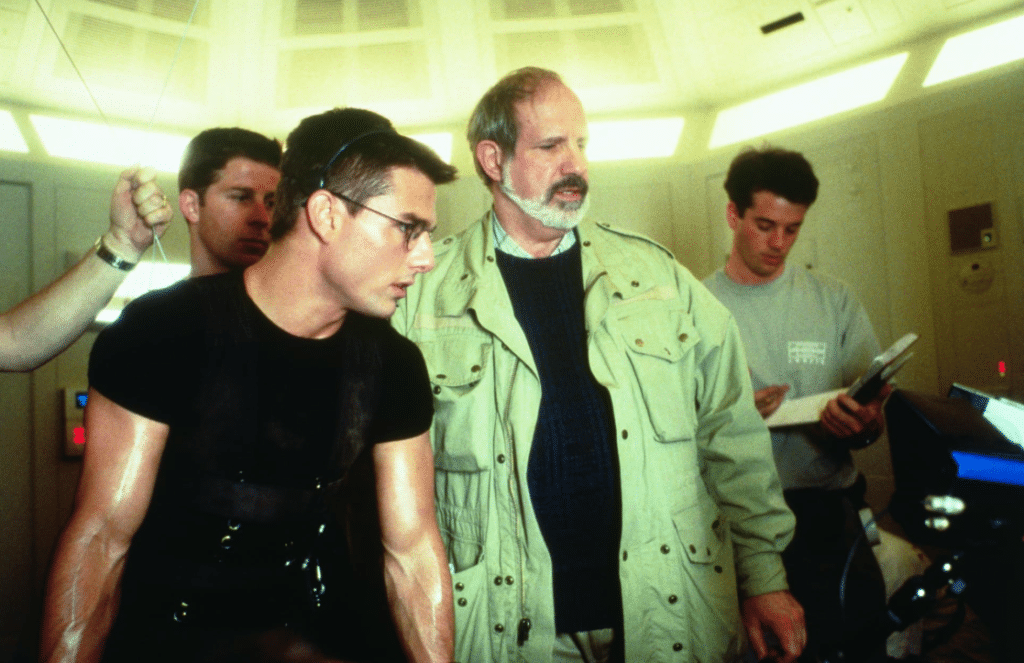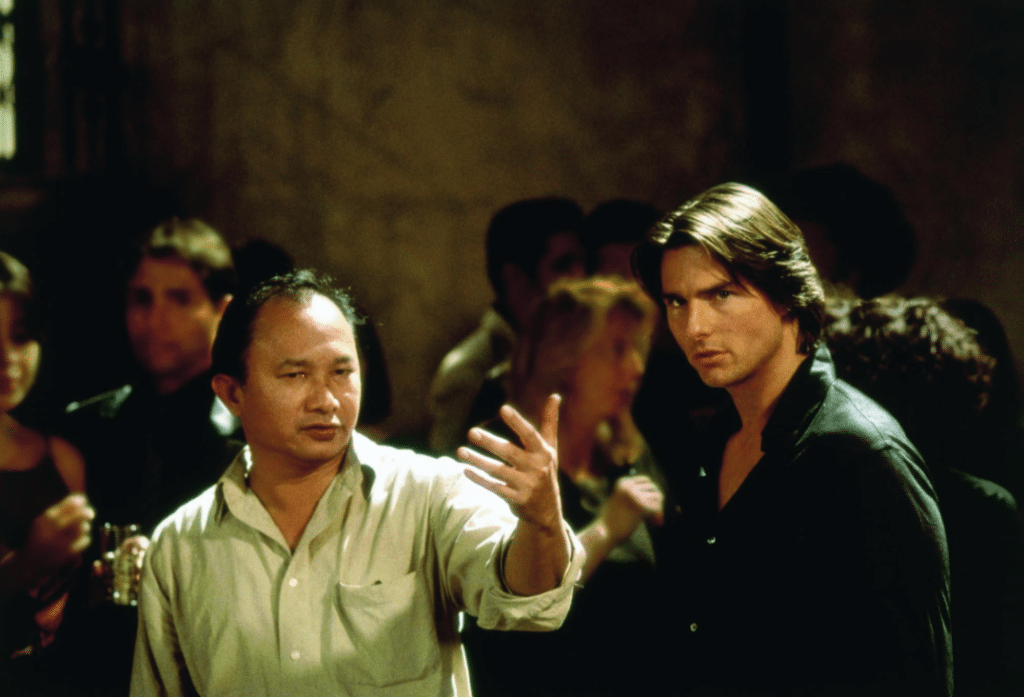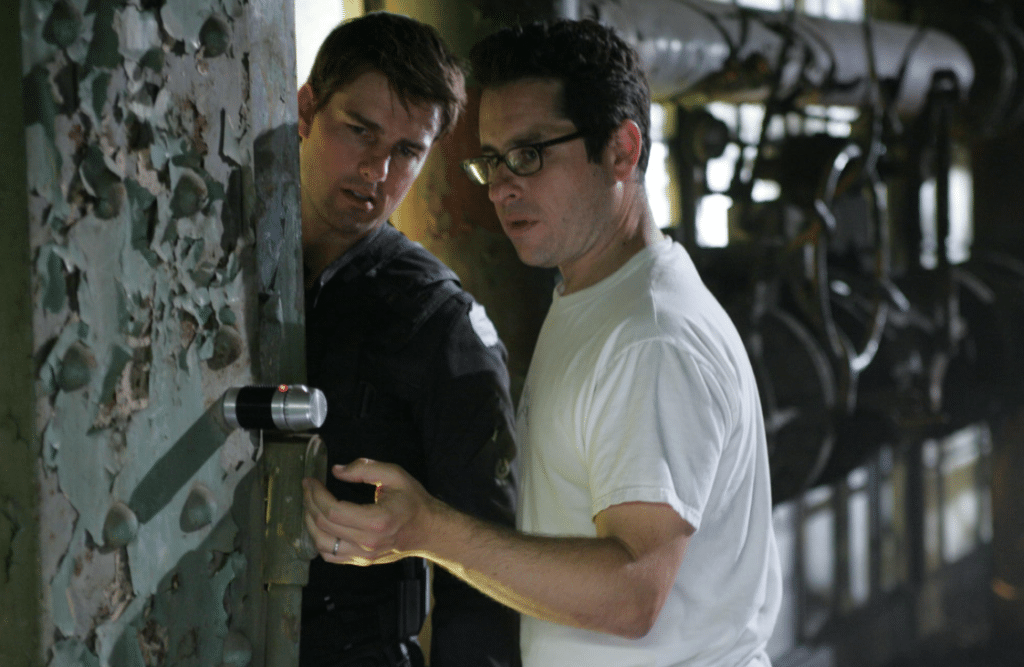After seven films, nearly three decades, and over $4 billion in global box office earnings, Tom Cruise is preparing to bid farewell to his iconic Ethan Hunt character with Mission: Impossible – The Final Reckoning. The eighth and climactic installment of the franchise is set to premiere at the Cannes Film Festival, ensuring a grand send-off—quite the contrast to the release of its predecessor, Mission: Impossible – Dead Reckoning Part One, which found itself overshadowed by the Barbenheimer phenomenon two years ago.
As the franchise reaches its conclusion, the five directors who helmed the Mission: Impossible films reflect on their contributions to transforming Ethan Hunt into America’s answer to James Bond. They recount filming death-defying sequences—breaking into the CIA and Kremlin headquarters, scaling the Burj Khalifa, clinging to the side of a cargo plane mid-flight, and executing motorcycle stunts that would send most actors running to their stunt doubles (or their agents).
Brian De Palma – Mission: Impossible (1996)

The evolution of Mission: Impossible from a spy thriller to an action spectacle with Cruise performing his own stunts began almost by accident. Brian De Palma, fresh off the underwhelming box office performance of Carlito’s Way, was in need of a hit. When Sydney Pollack dropped out of Mission: Impossible to direct Sabrina, super-agent Mike Ovitz swiftly brought De Palma on board.
De Palma had never seen the original TV series, but a recommendation from Steven Spielberg secured his place. His first radical decision? Killing off most of the team in the opening act.
“Tom wanted the film to be about five guys pulling off impossible missions,” De Palma recalls. “I said, ‘We’ve got to kill them all so we can focus on Tom as the leader of a new team.’”
Paramount initially wanted to include the original TV actors, but Peter Graves—who played the incorruptible Jim Phelps—was furious upon learning his character would be the film’s traitor. “I had nothing to do with that,” De Palma says. “I never watched the show. All I knew was there were four or five guys with different specialties. No real characters—just technicians.”
The production faced further turmoil when co-producer Paula Wagner and Cruise replaced screenwriter David Koepp with Robert Towne. De Palma kept Koepp on standby, working in secret while Towne drafted his version. “I had two writers in separate hotel rooms in London,” De Palma says. “David incorporated some of Towne’s ideas, and that became the final script.”
The film’s most iconic sequence—Hunt suspended by wires in the CIA’s high-security vault—was a product of Cruise’s ingenuity. “He figured out that putting coins in his shoes would balance his body and prevent him from flipping over,” De Palma says. “That was pure Tom.”
The climactic helicopter chase through the Channel Tunnel was another harrowing ordeal. “The wind was so strong, people had to be tied down or they’d fly off the set,” De Palma recalls. “Tom did a flip, missed the first take, and just went again.”
Despite the film’s $457 million success, De Palma declined to return for a sequel. “When Tom asked me to direct the second one, I said, ‘Are you kidding? Who wants to do another?’ I’d made the biggest hit of my career. Sequels weren’t my thing.”
John Woo – Mission: Impossible 2 (2000)

If De Palma’s film was defined by espionage and deception, John Woo’s sequel embraced full-throttle action. Cruise, enamored with Woo’s balletic gunfights in The Killer and Face/Off, envisioned Ethan Hunt as a modern-day Cary Grant—charismatic, stylish, and effortlessly cool.
“Tom wanted each film to have a different style,” Woo says. “I wanted Ethan to be energetic, with long hair that looked great in slow motion. I wasn’t just filming a spy—I was filming an idol.”
The film’s opening sequence—Hunt free-climbing Utah’s Dead Horse Point—was a nerve-wracking experience for Woo. “The cliff was 2,000 feet high. I begged him not to do it,” Woo recalls. “He just said, ‘Don’t worry, I’ve got a safety chain.’ I said, ‘What if the chain snaps?’ That’s when I saw the look—the one every Mission director comes to know.”
Woo’s signature dual-pistol shootouts made their way into the film, despite Cruise’s initial hesitation. “He didn’t want it too violent,” Woo says. “But the stunt team convinced him: ‘If you don’t use two guns, why hire John Woo?’”
The director still marvels at Cruise’s dedication. “He studied bioweapons so intensely, he even knew about Japan’s Unit 731 experiments in 1937. I was shocked.”
J.J. Abrams – Mission: Impossible III (2006)

After Woo’s operatic action, Cruise sought a grittier tone for the third installment. David Fincher and Joe Carnahan were initially attached before the role went to J.J. Abrams, then best known for TV’s Alias and Lost.
“I had no idea Tom was considering me to direct,” Abrams says. “We were just talking about movies, and suddenly he offered me the job.”
The film introduced Ethan’s personal life, with Michelle Monaghan as his fiancée, and pitted him against Philip Seymour Hoffman’s ruthless arms dealer. “Philip was terrifying,” Abrams says. “The way he pushed Tom’s buttons was electric.”
Abrams also had to rein in Cruise’s stunt enthusiasm. “I begged him not to crash through a glass window. He didn’t—but he did everything else.”
Brad Bird – Mission: Impossible – Ghost Protocol (2011)

After a five-year hiatus due to Cruise’s fallout with Paramount, the franchise returned with Brad Bird (The Incredibles) making his live-action debut. The film’s standout sequence—Hunt scaling Dubai’s Burj Khalifa—was originally planned as a small effects shot.
“We ended up breaking 36 windows,” Bird says. “Tom was hanging 1,700 feet in the air. I woke up at 3 a.m. thinking, ‘What am I doing?’ But he loved it—he’s like a kid on Christmas morning when you pitch him a crazy idea.”
Christopher McQuarrie – Mission: Impossible – Rogue Nation (2015)Mission: Impossible – Fallout (2018)Mission: Impossible – Dead Reckoning Part One (2023) Mission: Impossible – The Final Reckoning (2025)

From Rogue Nation to The Final Reckoning, Christopher McQuarrie has directed the last four films, pushing stunts to unprecedented levels—Hunt clinging to a plane, breaking his ankle in a rooftop leap, and performing a motorcycle cliff jump.
“Every film, we say, ‘This is the most dangerous thing we’ve ever done,’” McQuarrie says. “This time, we did it twice—the submarine sequence and the aerial scene.”
Safety was paramount, especially after the pandemic. “We had a rule: If anyone had ‘ducks’—stress or distractions—we didn’t shoot,” McQuarrie explains. “Accidents happen when people overlook small things.”
As the franchise concludes, McQuarrie reflects on its legacy. “We’ve delved deeper into Ethan’s character, making him more than just a spy. And that’s what makes these films special.”
With The Final Reckoning, Cruise and his directors have crafted a franchise defined by relentless ambition, jaw-dropping stunts, and a star who refuses to back down. As the curtain falls on Ethan Hunt’s journey, one thing is certain: Mission: Impossible has redefined action cinema—and it’s been one hell of a ride.
